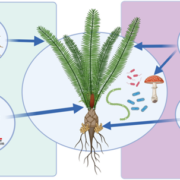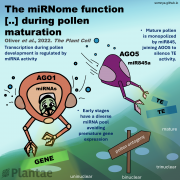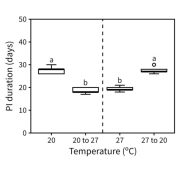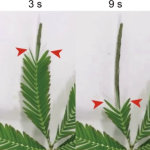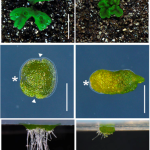Cuticle chemistry in Hibiscus iridescence
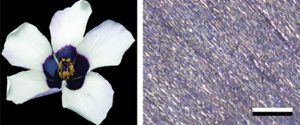 The long, long history of plant-pollinator interactions has led to a stunning variety of flower forms, including variations in petal color and iridescence. Color is caused by the accumulation of various pigments that selectively absorb certain wavelengths of light, whereas iridescence arises from surface structures that selectively diffract light (see Physics of Pollinator Attraction). In particular, diffraction gratings are ordered systems of ridges and grooves that allow constructive interference for different reflected wavelengths at different angles. In this work, Moyroud et al. explore the origin of these diffractive gratings, using a new model system of Hibiscus flowers. Specifically, they followed petal development over time to identify when these cuticular striation patterns arise. They found that cuticular striations can be independent of cuticle thickness or cell shape, but are affected by cuticle composition or the arrangement of its constituents, which may affect its material properties and therefore susceptibility to form striations. (Summary by Mary Williams @PlantTeaching) Curr. Biol. 10.1016/j.cub.2022.10.065
The long, long history of plant-pollinator interactions has led to a stunning variety of flower forms, including variations in petal color and iridescence. Color is caused by the accumulation of various pigments that selectively absorb certain wavelengths of light, whereas iridescence arises from surface structures that selectively diffract light (see Physics of Pollinator Attraction). In particular, diffraction gratings are ordered systems of ridges and grooves that allow constructive interference for different reflected wavelengths at different angles. In this work, Moyroud et al. explore the origin of these diffractive gratings, using a new model system of Hibiscus flowers. Specifically, they followed petal development over time to identify when these cuticular striation patterns arise. They found that cuticular striations can be independent of cuticle thickness or cell shape, but are affected by cuticle composition or the arrangement of its constituents, which may affect its material properties and therefore susceptibility to form striations. (Summary by Mary Williams @PlantTeaching) Curr. Biol. 10.1016/j.cub.2022.10.065




